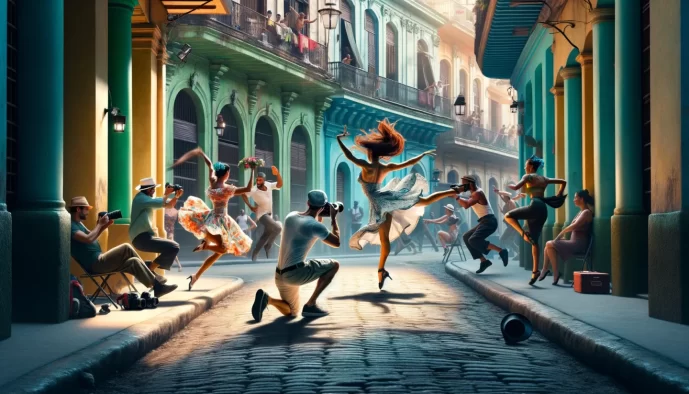Capture Motion: A Photo Guide
Master the art of motion photography with expert techniques and settings tips.

Understanding Motion in Photography
The Basics of Motion Capture
Capturing motion in photography is about balancing the technical with the creative. It’s the art of using shutter speed to either freeze a moment in time or let it smear across the frame for a dramatic effect.
Types of Motion in Photos
Motion in photos manifests as either subject motion or camera motion. The former captures the movement of your subject, while the latter involves moving the camera itself to create motion effects.
Equipment Essentials
Choosing the Right Camera
For motion photography, a camera with manual controls is quintessential. DSLRs and mirrorless cameras with the ability to adjust settings will offer the flexibility needed.
Lenses for Motion Photography
Wide aperture lenses are pivotal for action shots, while a versatile zoom lens can offer compositional flexibility. Fast auto-focus is a boon for tracking moving subjects.
Tripods and Stabilization Gear
A sturdy tripod is indispensable for long exposures. For panning, a tripod with a smooth head can be a game-changer. Handheld gimbals are valuable for video motion capture.
Camera Settings for Capturing Motion
Shutter Speed and Its Role
Shutter speed is the fulcrum of motion capture. Fast shutter speeds freeze action; slow shutter speeds allow for motion blur, portraying speed or movement.
Aperture and Depth of Field
Aperture affects depth of field, which in turn influences the focus range in a motion capture. A shallow depth of field can isolate a subject from the background.
ISO and Image Noise
Higher ISO settings can be used to capture faster-moving subjects in lower light but beware of the trade-off with increased image noise.
Techniques for Motion Photography
Panning for Dynamic Images
Panning involves moving the camera along with the subject. The result? A sharp subject against a blurred background, full of kinetic energy.
Long Exposure for Smooth Motion
Long exposures turn waterfalls into silk and night traffic into rivers of light. A slow shutter speed and a steady camera are the ingredients for this ethereal effect.
Freezing Action with High Shutter Speed
A fast shutter speed can stop time – think a hummingbird’s wings mid-flap. It’s a precise moment of reality, captured.
Composition and Framing
Leading Lines and Motion
Leading lines guide the viewer’s eye through the image, often towards a moving subject. They’re the visual pathways that add depth and context.
Using Foreground and Background
Foregrounds add scale, while backgrounds tell a story. In motion photography, they can create a context for the action or add a sense of place.
Post-Processing Motion Photos
Editing Software Choices
Selection ranges from Adobe Lightroom for nuanced adjustments to DaVinci Resolve for color grading. Software should be chosen based on workflow and output needs.
Adjusting Exposure and Color
Balancing highlights and shadows post-capture can salvage details. Color adjustments can make the motion stand out or blend with the ambiance.
Blurring and Sharpening Tools
Selective blurring can enhance motion effects, while sharpening can bring out details. Use sparingly to avoid artificial results.
Inspiring Ideas for Motion Photography
Capturing Sports and Fast Action
Sports photography is the quintessential test of motion capture skills. Anticipation and timing converge to create a visual spectacle.
Photographing Urban Movement
Urban environments are a ballet of motion. Trains, crowds, the interplay of light and shadow – all are fodder for the motion photographer.
Creative Projects with Light Trails
Night photography transforms moving lights into brushstrokes on the cityscape canvas. Experiment with exposure times to create your signature style with light trails.
Throughout this guide, remember that rules are starting points. Mastering motion photography comes from breaking these rules with intention and creative flair. Embrace the blurs and imperfections; they often hold the story’s spirit. And lastly, never underestimate the power of a well-timed elbow nudge to your tripod – sometimes, the best motion effects are born from happy accidents.